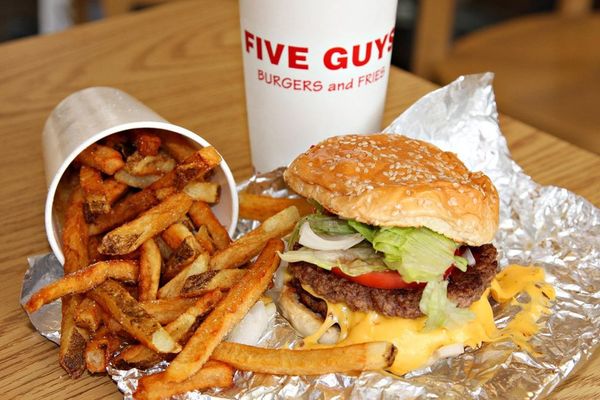Even though I’m a staunch believer in “everything in moderation,” nutrient-dense foods are essential for overall health and well-being. A number of foods widely considered as "healthy" are rich with macro- and micronutrients, like kale and quinoa. While food fads come and go, some healthier alternatives get a little more credit than they really deserve. Here are five examples
Granola
Granola and granola bars are a great snack...if you’re planning on hiking a mountain or cycling for the day. Otherwise, it’s far from a superfood: sure, it is a decent source of fiber and protein, but most brands are laden with added sugars. Additionally, granola requires some kind of binder to make, which is usually peanut butter or some other kind of oil. This makes granola very calorie-dense which, again, is great if you’re engaging in a lot of activity, but not so much if you’re snacking.
Some commercial granola bars, especially those that you see dipped in chocolate on the front of the box, are little more than a low-calorie candy bar. I am a granola fiend, but it is ridiculously easy to over-eat and not quite as healthy as often marketed.
Alternatives: Muesli is like granola without the binder (aka the fatty oils). You can put it on yogurt, oatmeal, or soak it overnight (like overnight oats). You are much less likely to mindlessly munch on it as well, unless you also like to eat Quaker oats straight from the tub.
Fruit Juices
Fighting off a cold? Orange juice is perfect to get some additional vitamins when you need it. However, the benefits of fruit and vegetable juices do not always outweigh the costs. “Juicing” fruits and vegetables has become common practice, but its nutritional effectiveness is disputed. During extraction, juice machines often leave out fiber (pulp), which leaves you with a glass of sugar that is much less easily digestible than if you had the pulp added in.
Commercial juices often always have added sugars in them as well, making them only marginally healthier than a soda. Fruit by itself is already known as "nature's candy," after all. While fruits are certainly essential in a clean diet, overconsumption can cause problems in the long term (in reference to a certain well-known, "thirty bananas a day" vegan activist).
Alternatives: If juice is life for you, just make sure you buy it WITH the pulp to ensure you’re also getting that fiber. You could also opt for smoothies instead. Add frozen fruit like strawberries and bananas, some greens, water, and you have a perfect breakfast that is still nutritionally dense and fibrous.
Organic Produce
Sometimes you’ll hear about how you can’t be fully healthy unless your apples and pears are purchased at Whole Foods (for your entire paycheck) and have the “100% certified organic” label stamped on them. GMO’s have been under scrutiny, but lately they’ve been defended by most scientists as being generally safe without carrying much risk. Plus, if we’re being completely honest, most of fruits and vegetables look completely different now than at the brink of their discovery—“genetic modification” has been around for centuries.
The health benefits for organic produce are virtually the same health benefits from regular produce. If you’re worried about your pears having “chemicals,” please remember that water is a chemical, too. And all apples are going to have trace amounts of cyanide in their seeds.
Alternatives: Organic food is, generally speaking, gimmicky and expensive. However, there is merit in buying local produce as it helps stimulate local economy and agriculture, so it is never a bad idea to check out fruits and vegetables at your local farmer’s markets if you're still wary. Otherwise, if you’re torn between that regular sweet pepper and that “organic” sweet pepper at the supermarket, think about what your wallet first and then decide.
Yogurt
Yogurt can be a perfectly healthy snack, but not always. The yogurt you most often see in the dairy aisle comes in an assortment of flavors. In fact, there are usually about ten or so dessert flavors alone that you can choose from any one brand. They’re all filled with sugar, especially the ones labeled "low-fat." Yogurt itself is a great protein source and digestive aid thanks to its live cultures, but the high added sugar content you find in most yogurt brands only defeats their purported “healthiness.”
Frozen yogurt is even worse: it’s not only sugary, but it also lacks those digestive-friendly live cultures. With froyo-specialty shops popping up all over the United States, people often deem it as a better alternative to ice cream. Many of those same people also enjoy their frozen yogurt by adding enough candy toppings to feed themselves for a week.
Alternatives: Just opt for plain yogurt and flavor it yourself. You can add a little peanut butter, some berries, and a drizzle of honey without adding the insane amount of sugar. As for froyo places? If you know you won’t be able to resist the flavored yogurt topped with a billion brownie bits, don’t kid yourself—just go to Coldstone.
“Gluten-free” anything
The only people that benefit from a gluten-free diet are those with actual gluten intolerances (i.e. people diagnosed with Celiac). For the rest of us, little evidence suggests that gluten is truly “bad,” or that gluten alternatives are much better for us health-wise. A cookie or a pizza is not healthier for you just because it is gluten-free, and it more than likely has around the same amount of calories as a regular cookie or pizza.
The gluten-free fad has some perks: those who cannot eat gluten for definitive health reasons have been presented with more non-gluten options than they have ever had available to them. The anti-gluten hysteria, however, is overblown and potentially trivializing to those who actually can’t consume it. Gluten probably won’t kill you, but even the tiniest amounts of it can cause a reaction for those with Celiac.
Alternatives: As someone with a food intolerance, don’t hesitate enjoy the foods that other people do not have a chance to enjoy. Bread is a wonderful blessing. If you absolutely HATE the idea of eating gluten on your pizza, though, “cauliflower pizza” is also a new thing.



 Photo by
Photo by  Photo by
Photo by  Photo by
Photo by  Photo by
Photo by 















